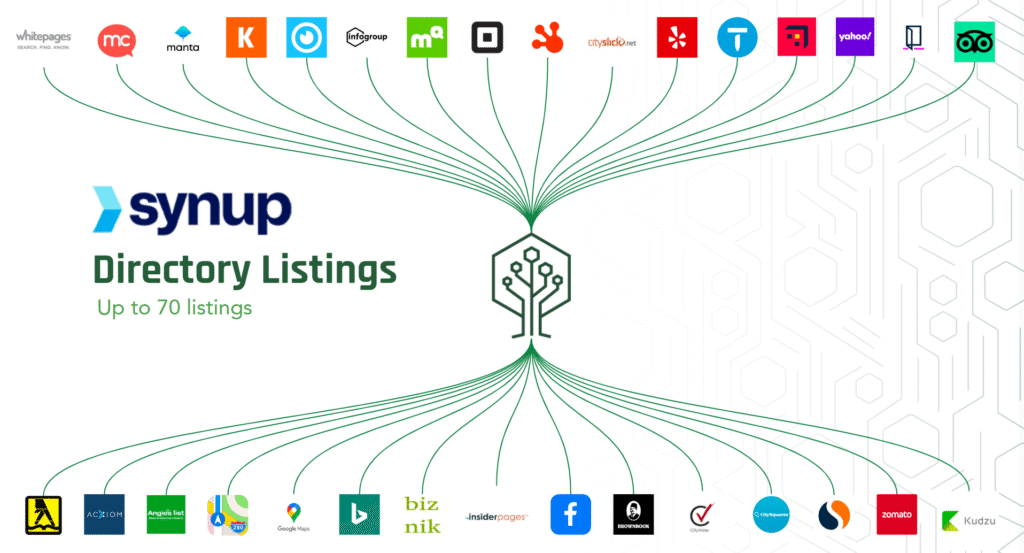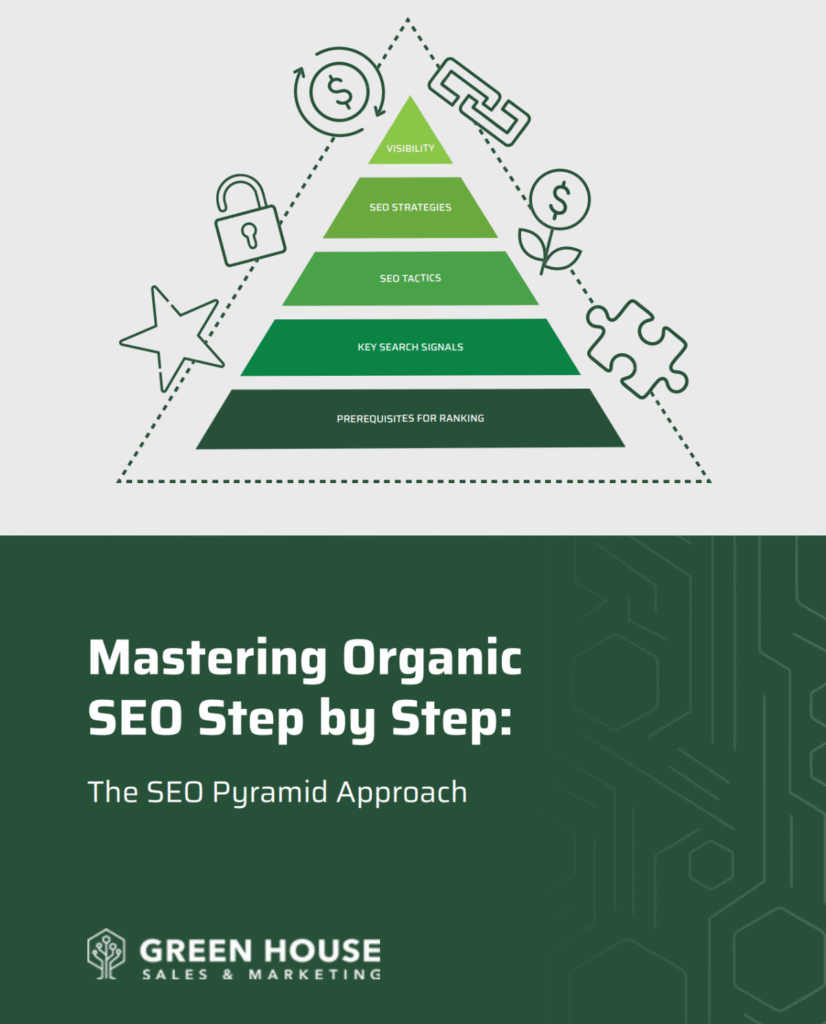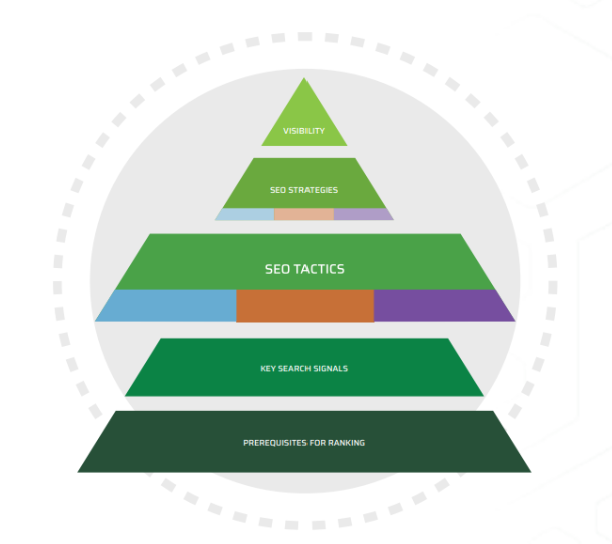- 1. Google Business Profile (GBP) Optimization
- 2. Local Reviews & Reputation
- 3. On-Page SEO & Local Keywords
- 4. Citations & Directory Listings
- 5. Backlinks & Local Link Building
- 6. AI & Search Personalization Factors
- 7. Engagement on Google Maps
- Learn More with Green House’s SEO Ebook
- Wrapping Up
- FAQs
Local SEO isn’t just about showing up on Google; it’s about becoming the obvious choice when local customers search for a product or service. With AI-driven personalization, voice search, and shifting user expectations, it’s no longer enough to exist online simply. You need to demonstrate relevance, trustworthiness, and authority in your community.
In 2025, consumers expect accurate, up-to-date information at their fingertips. They want to see reviews from people like them, photos that reflect your business, and content that answers their specific questions. Google (and other search engines) reward businesses that meet these expectations with better placement in local search results, Google Maps, and the Local Pack.
Many business owners assume that creating a website or claiming their Google Business Profile (GBP) is enough, but today’s local SEO requires a multi-layered, strategic approach. To help, let’s break down the top seven local SEO ranking factors and actionable steps you can take right now to improve your rankings, reviews, and overall visibility.
1. Google Business Profile (GBP) Optimization
Your Google Business Profile is the cornerstone of local SEO. It’s often the first impression potential customers have of your business. When optimized, your GBP not only boosts visibility but also communicates professionalism and trust.
Actionable Implementation:
- Complete every field: Add detailed business descriptions, services, hours (including holiday hours), categories, and products.
- Visual content: Upload high-quality photos of your storefront, interior, team, and products. Videos also stand out in 2025.
- Ongoing updates: Post weekly promotions, events, or announcements. This signals to Google that your business is active and reliable.
- Q&A management: Anticipate customer questions and answer them directly on your GBP.
Example: A local café that updates its profile weekly with menu specials, live music events, and photos of seasonal drinks will not only see higher engagement but also be more likely to appear in searches like “best latte near me.” This activity encourages customers to check the profile frequently, increasing clicks and direction requests. Over time, the café’s consistent updates can improve its local ranking and make it a go-to spot in the neighborhood.
Why This Works:
Google prioritizes businesses that provide accurate, detailed, and frequently updated information because it improves the user experience. A complete, active profile signals reliability, making Google more confident about showing your business in search results.

2. Local Reviews & Reputation
Reviews are digital word-of-mouth and remain a crucial ranking factor. Google doesn’t just look at the number of reviews; you’ll need quality, recency, diversity, and responses to stay competitive.
Actionable Implementation:
- Ask consistently: Automate review requests through text, email, or QR codes in-store.
- Respond professionally: Reply to every review (positive or negative) within 24–48 hours. Mention keywords naturally, like your service and city.
- Diversify platforms: While Google reviews are critical, don’t neglect Yelp, Facebook, and industry-specific review sites.
- Showcase reviews: Highlight testimonials on your website and social media to extend their influence.
Example: A Denver plumbing company that responds quickly to reviews like, “They fixed my sink fast, best plumber in Denver!” reinforces its local authority and builds trust with both Google and future customers. Regular responses to reviews encourage more customers to leave feedback, increasing the volume and recency of reviews. This, in turn, strengthens the company’s presence in local results and boosts its local ranking compared to competitors.
Why This Works:
Reviews act as a trust signal for both users and search engines. Google uses them to measure customer satisfaction and business credibility. A consistent stream of recent, positive reviews reassures Google that your business is active, reputable, and worthy of a higher ranking.
3. On-Page SEO & Local Keywords
Your website is your digital storefront, and on-page SEO ensures that search engines understand your services, location, and authority. Without a well-optimized site, even the best GBP won’t deliver long-term results.
Actionable Implementation:
- Local keyword placement: Add your city, neighborhood, or region into titles, meta descriptions, headers, and body content.
- NAP consistency: Display your Name, Address, and Phone number prominently on every page. Use the same format everywhere online.
- Schema markup: Add structured data to help search engines categorize your business and improve rich result eligibility.
- Localized content: Write blog posts or guides that directly tie into your local area (“Top 5 Summer Activities in Austin”).
Example: A hair salon with optimized service pages (“Hair Coloring in Provo, Utah”) and a blog about local trends will naturally rank higher when customers search “hair salon near me.” Additionally, creating localized content like tutorials, event coverage, or local trend guides signals to search engines that the salon is active and relevant in the community. This helps attract users looking for services nearby, directly improving local ranking and visibility in local results.
Why This Works:
On-page SEO makes your website machine-readable for Google. By including local keywords and structured data, you’re giving Google clear signals about who you serve and where you’re located. This reduces guesswork and increases your chances of showing up for relevant local queries.

4. Citations & Directory Listings
Citations, mentions of your business details across the web, are like digital breadcrumbs that validate your legitimacy. Consistent listings reinforce your brand’s authority and improve search rankings.
Actionable Implementation:
- Audit regularly: Use tools like BrightLocal or Moz Local to find errors in your listings.
- Correct inconsistencies: Ensure your NAP details are identical across Google, Yelp, Facebook, TripAdvisor, and niche directories.
- Expand strategically: Submit to local chambers of commerce, professional associations, or industry-specific directories.
- Monitor duplicates: Remove duplicate or outdated listings that may confuse search engines.
Example: A landscaping company with perfectly consistent citations across Yelp, Houzz, Angie’s List, and local directories will appear more prominently for “landscaping near me.” Each accurate listing reinforces the company’s credibility, making it easier for search engines to trust its business information. Over time, this consistent visibility drives more clicks and calls from potential customers in the area, further improving its local ranking.
Why This Works:
Google cross-checks business details across multiple sources. If your information is inconsistent, it creates doubt about your legitimacy. Consistent citations across directories signal trust and reliability, making it easier for Google to rank you higher.
5. Backlinks & Local Link Building
Backlinks are one of the strongest signals of trust and authority. Local backlinks in particular show Google that your business is an integral part of the community.
Actionable Implementation:
- Community partnerships: Collaborate with local influencers, bloggers, or nonprofits.
- Content outreach: Create locally relevant resources (e.g., “Guide to Summer Festivals in Dallas”) that earn natural backlinks.
- Event sponsorships: Support charity events, school fundraisers, or local sports teams in exchange for mentions on their websites.
- Press opportunities: Issue press releases for openings, expansions, or unique stories.
Example: A restaurant sponsoring a city food festival may receive backlinks from local media coverage, significantly boosting its visibility in local search. These links act as endorsements from trusted local sources, showing search engines that the restaurant is authoritative in the community. Combined with other local SEO efforts, these backlinks help the restaurant appear in more local results and attract nearby customers actively searching for dining options.
Why This Works:
Backlinks are essentially votes of confidence. When trusted local sites link to your business, it shows Google that you are credible and relevant to your community. The more authoritative the linking site, the stronger the signal.

6. AI & Search Personalization Factors
AI is transforming local search. In 2025, Google personalizes results based on intent, behavior, and context, not just keywords. That means businesses must provide clear, conversational, and useful answers to customer questions.
Actionable Implementation:
- Natural language content: Create FAQ pages and blog posts that address common customer queries in a conversational tone.
- Long-tail optimization: Target detailed search queries like “emergency dentist open late near me.”
- Review integration: Address recurring themes in your reviews by creating content that answers those concerns.
- Voice search readiness: Optimize for how people speak, not just how they type.
Example: A fitness studio with an FAQ section answering “What’s the best beginner yoga class in Chicago?” may appear in voice search results when someone asks their phone the same question. By aligning content with real user questions and natural search language, the studio becomes more likely to show up in personalized local results. This increased relevance helps boost its local ranking and ensures potential clients find the answers they need instantly.
Why This Works:
AI-driven search prioritizes relevance and user intent over simple keyword matching. By answering questions in a natural way, your business becomes more aligned with how people actually search, improving both rankings and user satisfaction.
7. Engagement on Google Maps
Google Maps is no longer just for directions—it’s a discovery engine. Engagement signals like photo uploads, clicks, check-ins, and requests for directions all impact rankings.
Actionable Implementation:
- Regular uploads: Add new photos and short videos weekly. Encourage customers to do the same.
- Attributes: Add tags like “family-friendly,” “free Wi-Fi,” or “pet-friendly” to improve search visibility.
- Interaction prompts: Ask customers to check in, leave reviews, or share photos of their visit.
- Track insights: Use Google Business Profile analytics to monitor clicks, calls, and direction requests.
Example: A bakery that updates its profile with daily pastry photos and encourages customers to tag their experiences will see more visibility in searches like “best bakery near me.” Customer-generated content and frequent updates increase engagement signals that search engines use to evaluate relevance. Over time, higher interaction leads to improved local ranking and stronger placement in local results, driving more foot traffic and repeat visits.
Why This Works:
Google interprets engagement as relevance. When users interact with your profile by clicking for directions, calling, or uploading photos, it signals to Google that people find your business useful. The more engagement you drive, the stronger your visibility in Maps becomes.

Learn More with Green House’s SEO Ebook
Want to take your local SEO strategy beyond the basics? Download Green House Sales and Marketing’s SEO Ebook for in-depth tips, proven strategies, and expert insights. This resource covers everything from optimizing your Google Business Profile to mastering AI-powered personalization so your business can dominate local search in 2025.
Get your copy here: https://fertilizer.thegreenhouseuvu.com/seo_ebook
Wrapping Up
Local SEO in 2025 is about more than rankings, it’s about building visibility, trust, and connection where your customers are searching most. By focusing on your Google Business Profile, cultivating reviews, strengthening your on-page SEO, cleaning up citations, earning backlinks, preparing for AI personalization, and driving engagement on Google Maps, you’ll create a well-rounded strategy that ensures consistent results.
Start small: audit your GBP, respond to reviews, and optimize your website for local keywords. Then move on to link building, personalized content, and community engagement. With consistent effort, you can outpace competitors, capture more local traffic, and become the go-to choice for customers in your area.
In 2025, local SEO isn’t just about being found—it’s about being chosen.
FAQs
What’s the difference between general SEO and local SEO?
Answer: General SEO focuses on improving your visibility in broad searches that may span nationally or even globally. It’s about ranking for general keywords like “best digital marketing strategies” that aren’t tied to one location. Local SEO, on the other hand, zeroes in on local results by optimizing your business information, reviews, and Google Business Profile.
For example, if someone searches “dentist near me,” local SEO helps your practice show up in the Local Pack and on Google Maps. This matters because the search engine is prioritizing relevance and proximity. Local SEO directly influences your local ranking, ensuring your business connects with people who are physically close and ready to buy.
How does a Google Business Profile affect local search results?
Answer: Your Google Business Profile (GBP) is one of the strongest drivers of local results and a major factor in improving your local ranking. A well-optimized GBP showcases your hours, services, reviews, photos, and updates, all pieces of business information that searchers use to evaluate your company instantly.
Because Google pulls directly from your GBP for Maps and local listings, keeping this profile active tells the search engine that your information is accurate and trustworthy. The more complete it is, the more likely you’ll appear at the top of local results when customers search nearby. In other words, your GBP is your digital storefront and a foundation for long-term visibility.
Why is local SEO important for small businesses?
Answer: Local SEO levels the playing field by helping small businesses appear alongside larger competitors in local results. Unlike general SEO, which can be dominated by national brands with huge budgets, local SEO focuses on improving your local ranking so you can connect with nearby customers who are ready to make a purchase.
Accurate business information, consistent directory listings, and positive reviews all feed into how a search engine evaluates your credibility. This not only boosts your visibility in local results but also builds trust within your community. For small businesses, local SEO is one of the most cost-effective ways to grow, attract foot traffic, and strengthen long-term reputation.


